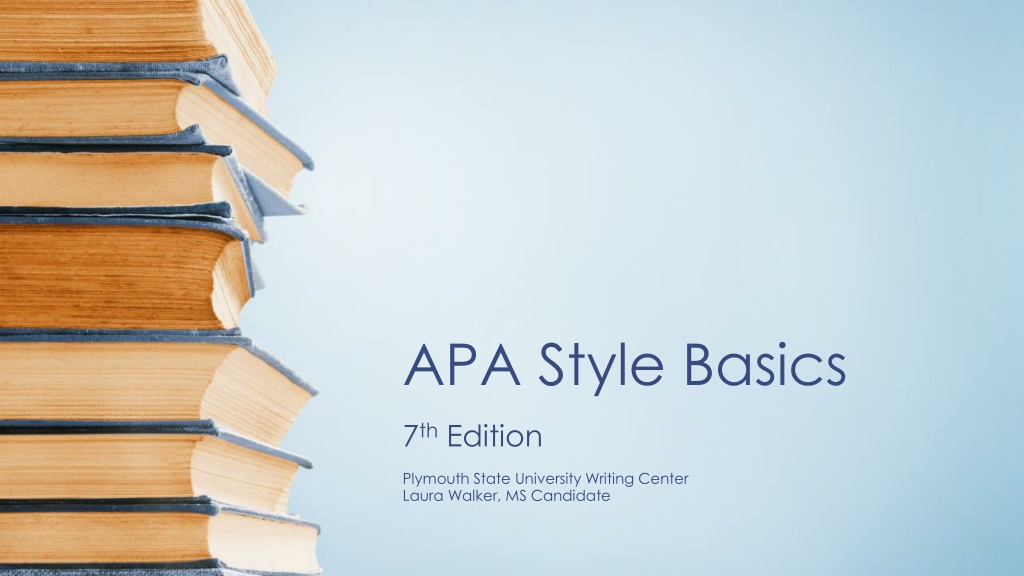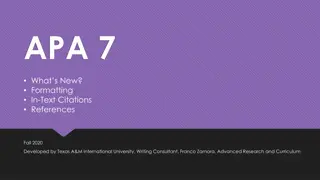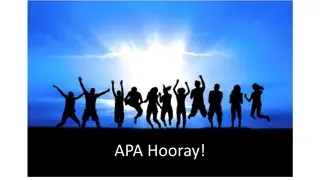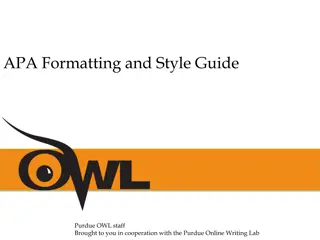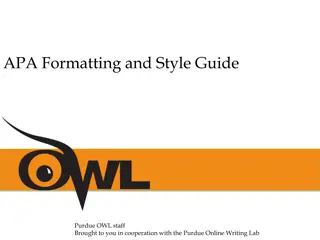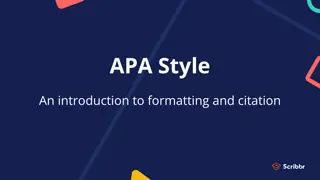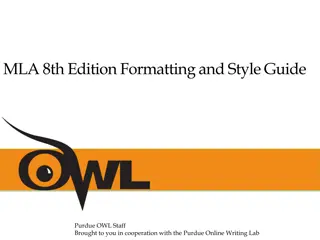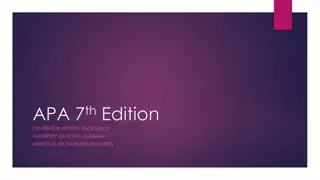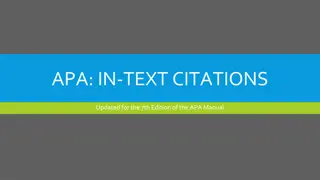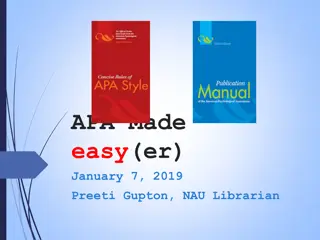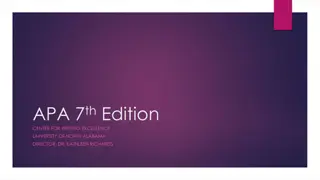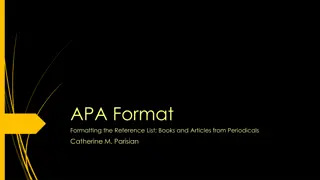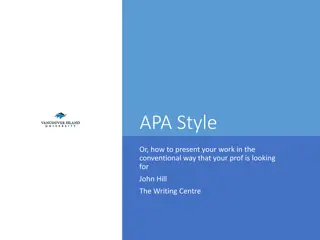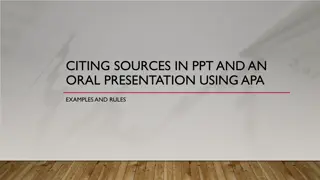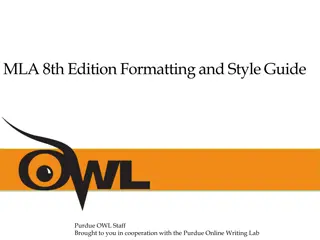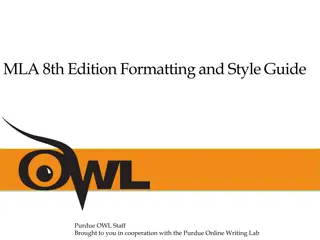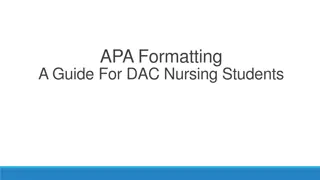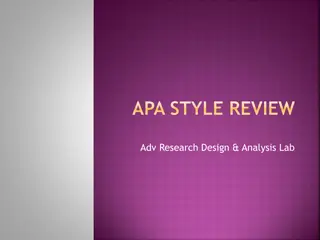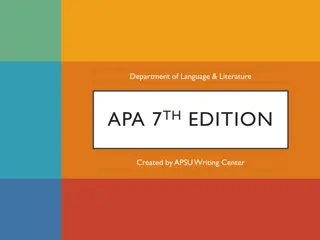APA Style Basics & Formatting Guidelines
Learn the essentials of APA style, including the importance of clear communication in social and behavioral sciences, guidelines for in-text citations and references, proper formatting for title pages, and the use of signal verbs in writing. Explore why APA format is crucial for various academic documents like term papers, research reports, and case studies. Get insights into creating a well-structured APA student title page and following a basic formatting checklist for your academic papers.
Download Presentation

Please find below an Image/Link to download the presentation.
The content on the website is provided AS IS for your information and personal use only. It may not be sold, licensed, or shared on other websites without obtaining consent from the author. Download presentation by click this link. If you encounter any issues during the download, it is possible that the publisher has removed the file from their server.
E N D
Presentation Transcript
APA Style Basics 7thEdition Plymouth State University Writing Center Laura Walker, MS Candidate
APA Style Basics Why APA? APA arose out of a need to communicate clearly and effectively in the field of social and behavioral sciences. APA creates a way to communicate what is important in the field. What is important? Who did the work? When did they do it? Is the information current? Has the author used past tense or present perfect for signal verbs? Baker (2003) showed ... or Baker (2003) has shown Has the author only used present tense to discuss results? The experiment demonstrates or researchers agree
APA Style What for? Term Papers Research Reports Empirical studies Literature Reviews Theoretical Articles Methodological Articles Case Studies
APA: The Title Page Running head: A SHORTER VERSION OF YOUR TITLE (ALL CAPS) justified to the left APA 7 CHANGE: PSU Grad do not use the words Running head PSU Undergrad Check with professor if running head needed Title centered in upper half of page and BOLD; title case Extra space after title Author s (your) name (first, middle initial, and last name) Check with professor; typically includes department, institution, professor name, due date
APA: Basic Formatting Checklist 8.5 X 11 paper 1 margins Acceptable serif or sans serif fonts (12-point Times New Roman is safe!) Double spaced (whole document, use care to remove space after paragraph ) Indent first line of every paragraph inch Running head if applicable Page numbers on ALL pages Title page Abstract (if required) Reference page Properly formatted citations
APA: In-text Citations For something paraphrased - last name author and year of publication (Jones, 2018). For a direct quote According to Jones (2018), students often time (p. 199). For a direct quote if author not named in signal phrase Furthermore, students often time (Jones, 2018, p. 199), but she as to why. (Quickmeme.com, n.d.)
APA: Reference Page Checklist Running head if applicable Page number References top of page, centered, and BOLD Double spaced Author s names (Last, First) in alphabetical order Page numbers from journal articles Hanging indents Italicize book, journal etc. titles do not italicize chapter, article etc. titles
Additional Resources www.apastyle.org https://apastyle.apa.org/instructional-aids/handouts-guides https://owl.purdue.edu/owl/purdue_owl.html http://library.plymouth.edu https://campus.plymouth.edu/writing-center/
References American Psychological Association. (2019). Basics of APA style tutorial. http://flash1r.apa.org/apastyle/basics-html5/index.html?_ga=2.138782195.1760607880.1550442902- 2114806546.1538669491 American Psychological Association. (2020). Publication manual of the American Psychological Association: The official guide to APA style. Author. Page Pulp. (2014). Calvin and Hobbes sums up academia. Page Pulp. http://www.pagepulp.com/291/calvin-and-hobbes-sums-up-the-academic-experience/
